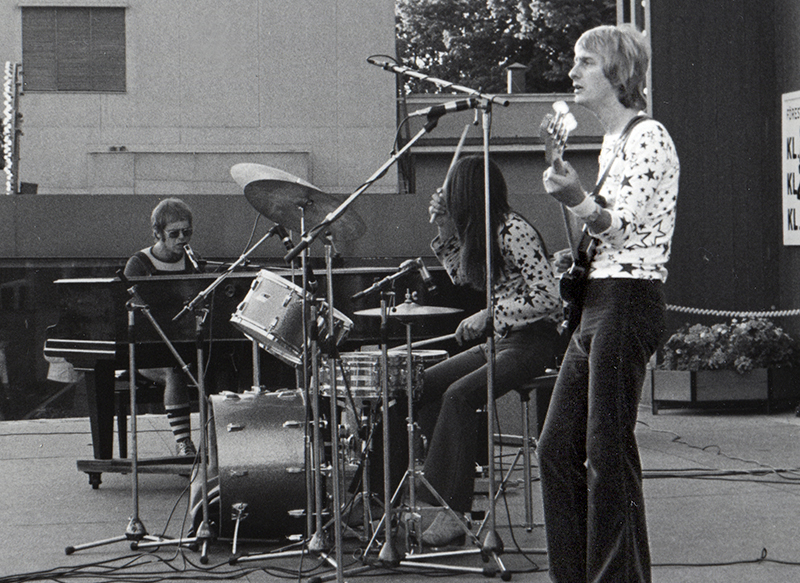British bassist Dee Murray held down the low end in Elton John’s band throughout the singer’s meteoric rise to fame and was responsible for the bass lines on many of Elton’s most successful singles. Although Murray became a permanent fixture of Elton’s live band in 1970, it wasn’t until 1972’s Honky Chateau that he was allowed to contribute bass to an entire record. Dee only appeared on one track on Tumbleweed Connection (1970) and Madman Across The Water (1972). Production of Honky Chateau was handled by long term studio collaborator Angus Boyd Dudgeon, who had also produced ‘Space Oddity’ for David Bowie a few years earlier.
Elton John – ‘Rocket Man’ bass transcription PDF
‘Rocket Man’ bass line analysis
‘Rocket Man’, the lead single from Honky Chateau, is a great showcase of Dee Murray’s playing style. During the first and third verse sections, Murray displays his melodic sensibility through high-register root notes linked together by rapid flourishes; these sections are a great opportunity to practise your ledger line reading, which doesn’t always get much attention in ‘everyday’ bass playing situations. You can hear more of Dee’s upper-register explorations during the verse of ‘Salvation’, also taken from the same album. If you’re keen for more dusty-end action in a similar vein, then John Deacon’s part on ‘We Are The Champions’ is another excellent workout.
The last two bars of the verse sections of ‘Rocket Man’ show how tension can be built against static harmony through use of chord tones and approach notes, as Dee ascends through an F major arpeggio using a combination of chromatic and diatonic approaches from two notes below each chord tone. Verses 1 and 3 utilise a double chromatic approach in the higher octave (bars 15 and 47), while verse 2 contains diatonic approaches played in a lower octave for variation (bar 39).
Although these approaches are played in 16th-note triplets and 32nd-notes the song’s ballad tempo means that the more rapid note values shouldn’t be too technically taxing, although reading the rhythms on the first pass through the transcription might be a different story.
The chorus sections stand in stark contrast to the verses as Dee plays one of the most sparse and simple lines possible. By using straightforward ascending major triads without any rhythmic embellishment Dee leaves space for the vocals and the additional instrumentation that enter in this section. The part becomes more rhythmically active in the second half of the chorus, with more 16th-note phrases being introduced, but the line still revolves predominantly around roots and fifths.
Dee Murray’s bass tone on ‘Rocket Man’ is warm and punchy without being overly bright or nasal; to me, it sounds like flatwounds on the original. Dee was equally adept with pick or fingers, but it’s hard to say for certain which was used on ‘Rocket Man’ When playing through the chart, I tend to play the first and third lines of each chorus in fifth position and the second and fourth lines down in first position. Of course, the beauty of notation is that you can make your own choices about how and where all of these lines are played.
When reading through the transcription it’s worth bearing in mind that any muted notes represent the pitch of open string that is being plucked, rather than any specific fretted note.

